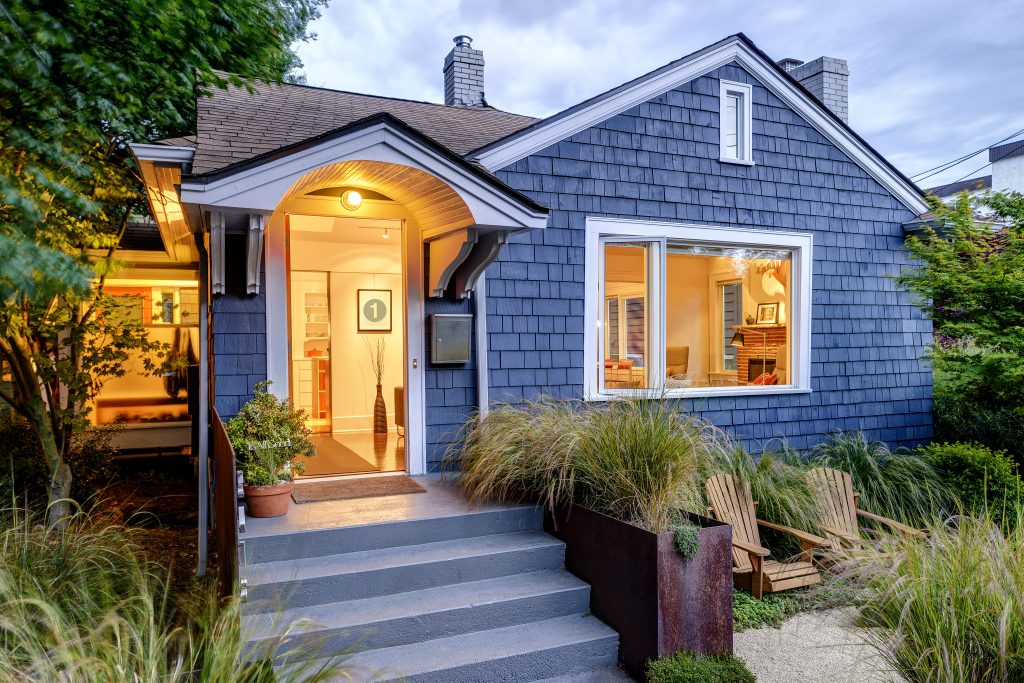
As a homeowner, it is essential to prioritize maintaining the property in order to preserve its value. In addition, with the increasing frequency and severity of natural disasters, it is important to consider incorporating protective measures into home construction and renovations in order to lessen the effects of extreme weather events. Ensuring the proper upkeep and resilience of one’s home is a significant responsibility.
As we continue to address the challenges posed by changing climate conditions, it is important to consider the long-term resilience of our homes. Fortunately, many developers are already incorporating protective measures into building materials and design. As a homeowner, you can also make informed decisions about home upgrades that prioritize the long-term protection of your property. Additionally, it is important to consistently engage in regular maintenance to ensure the durability and overall well-being of your home.
General upkeep
Regardless of size, age, or building materials, every home needs certain regular maintenance. For example, always keep an eye out for insect and rodent damage. Pests can wreak havoc on the structure of the home, weakening its protection against water and wind.
Regular maintenance and inspections of various systems within the home are necessary to prevent costly damages. This can include servicing the HVAC system twice a year, draining the water heater annually or semi-annually, and scheduling regular pumping for the septic system. Additionally, it is advisable to have the chimney cleaned and inspected before each burning season to prevent fires. By staying vigilant with these maintenance tasks, you can avoid issues such as leaks, floods, and fires.
Bring repairs up to date
Prompt attention to household repairs is essential in order to prevent further damage. This can include fixing issues such as detached siding, roof leaks, chipping paint, loose railings, and unstable steps. Similarly, it is important to address smaller repairs inside the home, such as leaking faucets, doors that do not function properly, torn dryer hoses, and electrical issues. Neglecting even minor repairs can compromise the overall integrity of the home.
Make updates
When making updates to your home, it is important to consider the long-term benefits for both the inhabitants and the environment. For example, installing energy-efficient windows can improve the comfort of the space and reduce energy consumption. Other upgrades, such as smart lighting, a programmable thermostat, and energy-efficient appliances, can have similar benefits and also increase the value of the home. It is worth considering these types of enhancements when making renovations or improvements.
Create a climate resiliency plan
There are various ways to enhance the resilience of your home, whether you are making small updates or building from scratch. One option is to install a storm door in place of a standard screen door.
Additionally, consider adding storm shutters to windows for added protection and improved curb appeal. Investing in storm-rated doors and windows is also a good idea. By taking these types of precautions, you can better protect your home and yourselves against natural disasters such as storms, fires, and earthquakes.
Real-world examples
Developers are utilizing innovative technologies to fortify homes against the increasing threat of rising waters, strong winds, and wildfires.
Babcock Ranch, a community in Florida, serves as an example of proactive planning to withstand natural disasters such as severe tropical storms and hurricanes. The homes in this development have been designed to withstand damage while maintaining essential services such as electricity, water, and internet. To further enhance resilience, the power lines are buried to protect against wind and lightning, and the community is powered by solar panels, with excess energy being sold back to the grid. In addition, the development utilizes stormwater capture and retaining ponds to mitigate the risk of flooding.
Babcock Ranch was tested by Hurricane Ian, which brought strong winds and heavy rain to the area. Despite the severe conditions, the homes in the community remained fully intact and did not experience any power loss. This was in contrast to neighboring communities that were not as well-prepared and suffered damage.
A master-planned community in Utah has made significant efforts to conserve water through the implementation of sustainable land management and architecture. The community regularly updates its water conservation goals and has implemented systems such as rainwater harvesting and the use of native plants to minimize water usage. In addition, the community has taken steps to address the urban heat island effect by planting trees. The most recent updates include the incorporation of smart technology to detect irrigation leaks and monitor water consumption.
Take personal climate-protective action
When making changes to your home, whether through retrofitting or purchasing new materials, it is important to carefully consider the design and materials used. The strength and resilience of your home may depend on these choices, particularly in the face of natural disasters.
When selecting a location for a home, it is important to consider various factors that may affect its safety and resilience. This can include avoiding areas prone to earthquakes, volcanic eruptions, and hurricanes, as well as researching the history of flooding in the region. It is also advisable to check with your insurance company about coverage for damages caused by storms, floods, winds, fires, and other disasters. By taking these precautions, you can ensure the protection of your home and its inhabitants.
To protect against the risk of flooding, it may be advisable to elevate your home using stilts or to ensure proper drainage away from the foundation. If a traditional foundation is used, it is important to ensure that it is designed and installed in a way that promotes effective drainage.
To reduce the risk of wildfire damage to your home, it is important to create a defensible space around the property. This can involve trimming branches to a height of six to eight feet from the ground, removing dead grass and other flammable materials from a distance of at least 100 ft from home, planting native plants, and avoiding the storage of firewood and use of wood mulch near the home. On properties with a steep slope, it may also be advisable to space trees farther apart. These measures can help to reduce the risk of wildfire damage to your home.
Conclusion
The location of your home can significantly impact the measures you take to protect and maintain it. It is important to plan for potential worst-case scenarios and prioritize regular maintenance and upgrades to ensure the longevity and resilience of your home. By taking these precautions, you can safeguard your property and your family.
Now is a great time to sell! If you or someone you know is considering selling your home or land, we would be happy to offer a complimentary consultation. Call New Earth AVL Realty today and Contact Us.
If buying a home, or selling your house in 2023 is your goal, call us today. New Earth AVL Realty and I would be honored to connect, and Be of service to you and your family!
Many Blessings and Happy Holidays,
Jason Martini
828.515.1771 (google voice) or 530.615.9345 (direct)
PS. Who do you know that I can serve?… Who is choosing to buy, sell, or invest in real estate in AVL or Beyond? I Am grateful for your referrals! Your friends and family will thank you for connecting us!
PSS. Please feel free to comment below and let us know how you liked this blog post and what it brought up in you. And by all means… share it on your social sites too!


